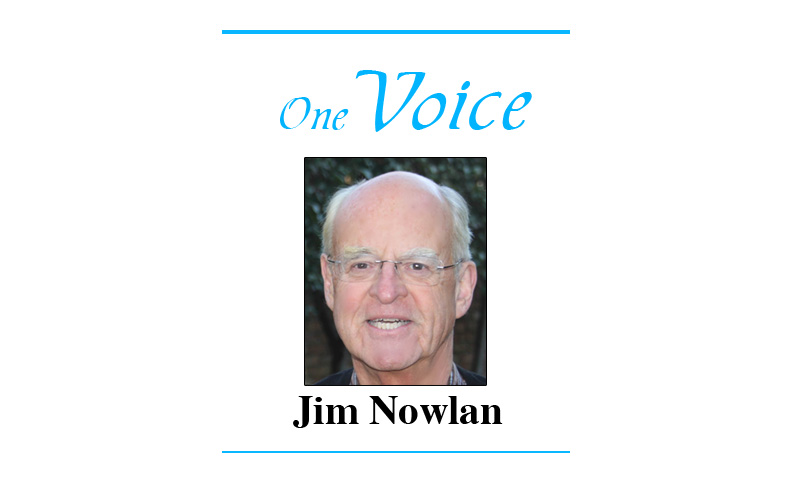
At the post office the other day, where all of us in my rural town go to pick up our daily mail, a friend asked: “Why are we so angry, Jim?” By “we” he didn’t mean the two of us, and I could tell, even with his mask on, he was concerned.
Anger is not new to America. In April 1968, as a junior officer in the Army, I was among those ordered hurriedly to assist the Illinois National Guard in stopping the rioting on Chicago’s West Side, which was literally ablaze in the wake of the assassination of Martin Luther King, Jr. Surreal.
In August of that fateful year, thousands of Vietnam War protesters stormed Chicago. They set upon provoking violence, successfully, from Chicago cops who occupied a different world from the long-haired, liberal provocateurs. Indeed, Days of Rage.
A major difference, to me anyway, between those violent episodes and the recent assault on our U.S. Capitol is that the grievances back then were clear. Today, nobody seems sure why, and thus my friend’s question.
I suggest the following as among the underlying resentments of those who protest the present state of our union, whether violence prone or not so:
• The rise of minorities and women; the latter are now far exceeding men in educational achievement. Until recently, white males had both groups under their thumbs.
• Rising income inequality. Since 1966, average family income for those in the bottom two-fifths of the Nation has been flat, according to the U.S. Department of Health and Human Services. In contrast, income for the top fifth has more than doubled, from seven times to 14 times more than those in the bottom fifth!
• Rural America is generally struggling, indeed hurting. Many who live in this “flyover country” like their laid-back, small-town way of life, and don’t want to leave. Yet, they sense they are being left behind by those in the plugged-in big cities.
• Many who are struggling economically may feel a sense of guilt that they coulda/shoulda done better in school. But we humans can’t blame ourselves, so we project our shortcomings on to others. Over the past century and beyond, blame was pinned on to international bankers. Now, it’s the elites, they feel, who are trying to lord over them.
• But the biggest factor in generating anger, or so I contend (with later research to confirm me or not), is the melee of intense, often provocative, sometimes violence-tinged information that comes through social media.
The human brain craves information. The reptilian brain stem at the base of our heads is constantly scanning the horizon for threats and opportunities, that is, information. That is what has kept us alive. In the center of our squishy, grapefruit-size brain is our limbic system, which for jillions of years has been mediating our emotions and such as our flight-or-fight decisions.
At the front of our brain is the frontal cortex, the thinking part of our noggin, which has been developing over the more recent millions of years. The frontal cortex, the various parts of the limbic system and the reptilian brain stem are all in constant communication, neurons caroming hither and yon. The frontal cortex advises the limbic system, you might say, but the latter often ultimately controls our decisions.
Pertinent to all this is the concept of group polarization. The Harvard scholar, Cass Sunstein, puts it: “When people find themselves in groups of like-minded types [read: liberal or conservative, or radical social media echo chambers], they are especially likely to move to extremes.”
I contend the constant stream of reinforcing messages within these echo chambers can overload the brain, causing the equivalent of electrical storms in our limbic system. These storms can unleash unthinking passions, even violence, among some of us.
So, what to do? The following is tentative and insufficient, and in need of much more reflection:
• Freedom of speech is cherished, central to our being as a Nation. Yet, it has been regulated in the past, through what was called the Fairness Doctrine. In force from 1949 to 1985, the doctrine required that broadcasters present “contrasting viewpoints.” Facebook, Twitter, and other social media platforms have become, given their incredible popularity, similiar to broadcasters, in the public interest. So, maybe something along the lines of a fairness doctrine for social media programming that is focused on political discourse.
• Or, related, maybe independent panels of citizens to review the effectiveness of Facebook and other social media in washing hate and violence-inciting content, and certainly that from mischievous foreign sources, from their platforms.
• Finally, and less controversial, we need to beef up civics education from grammar school through post-high school programs. The apparent ignorance of the rule of law and democratic processes reflected in much discourse I see and hear is deeply troubling.
For many years, Jim Nowlan was a senior fellow and political science professor at the University of Illinois in Urbana-Champaign. He has worked for three unindicted governors and published a weekly newspaper in central Illinois.

